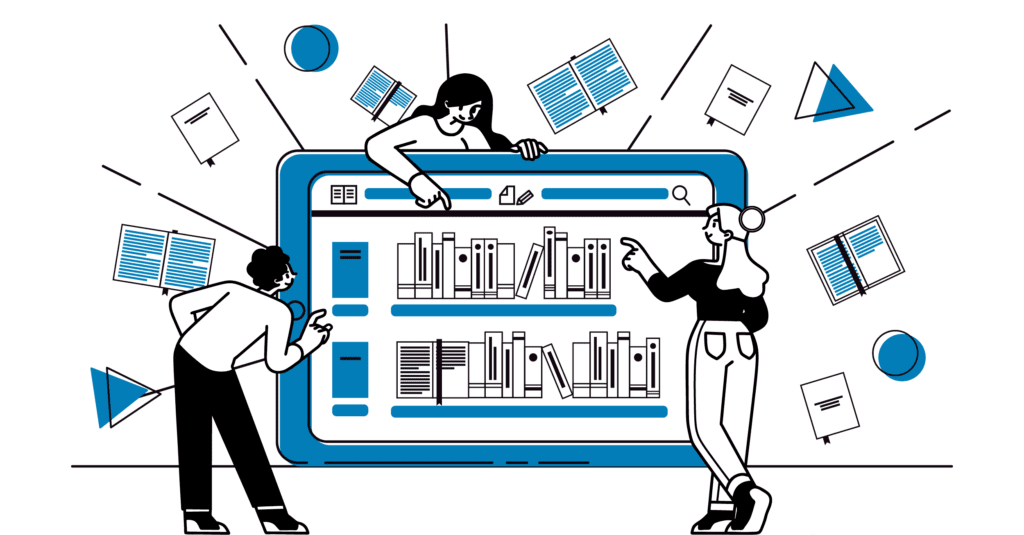Transform Your Legacy Learning Content Library into Training Gold

You made a substantial investment in your legacy learning content library, no matter how old it is right now. And to stretch that investment further by updating and reusing content is absolutely a smart decision.
First and foremost, you want to ensure that you’ve got a learning content management system that’ll make it as easy as possible for you to consolidate and update your old content. For a killer legacy learning strategy, your minimum requirements for this system should be searchability that’s similar to Google and accessibility for your employees on any mobile device—so it becomes your employees’ single source of truth.
Over the years, we’ve honed the content consolidation process with our customers, including McDonald’s, Whole Foods, and H&R Block. We’ve created five easy steps that work for every content project, whether you’re tackling 100 documents or 10,000. Here’s the rundown:
Step 1: Take Stock
It’s impossible to know what to save or toss out if you don’t know what you have. So, the first logical step is to create a content inventory. But what does that mean?
Build a complete list. Be sure to cover your entire legacy learning content library, which means including content from all systems and platforms.
Be detailed. Include information such as content type, purpose, and intended audience, which makes it easier to spot redundancies, inconsistencies, and outdated information.
Categorize content. Think about how you’ll sort the information, i.e. by content purpose (onboarding, reference, training, job aids), format (text, video, image), age (current, outdated), audience (job roles, locations), and the content owner (authors, editors).
TIP: We recommend assigning ownership to the overall learning content library refresh project. Enlisting someone who didn’t develop the original content is a shrewd strategy since that person can contribute fresh eyes and raise new questions about a piece of content’s purpose, audience, and substance.
Step 2: Purge and Prioritize
With your inventory list complete, you might be surprised at how many documents are out of date. Now is the perfect time to determine what to cut or de-prioritize. Ask your team these questions:
- What pieces of content do we want to keep as-is?
- What content should we adapt?
- What people and skills do we have today to do the work?
- What roles do we need to fill in order to dedicate enough time and skill sets to our knowledge management efforts?
TIP: Take the time to think about how you can prioritize efforts based on your team’s current and forecasted capacity and the amount of content you’d like to update and refresh.
Step 3: Design
Now that you know what content is a priority, you can focus on design. The best way to start is with what learning moments you want to deliver. What does the employee learning journey look like for each job role? This design exercise will reveal insights into a new content architecture and identify gaps in the current inventory.
This step is where you want to standardize your design across all content. Chances are, you’ve stockpiled content created by dozens or even hundreds of people over many years. At this stage, gather design requirements (brand guidelines, images, icons) so that every piece of content in your learning content library is consistent and on-brand.
TIP: Don’t forget to also modernize your content. Interactive bite-sized chunks of information in a variety of formats (video, graphics, slideshows, etc.) will dramatically boost employee engagement and retention of your content.
Step 4: Launch in Phases
It’s unlikely that all your refreshed content needs to be launched at the same time. Think through immediate needs versus what can be phased in. Decide what content your employees need on a daily or regular basis, what’s tied to critical business results, and what internal milestones or events you can leverage to announce updated content.
TIP: As a general rule, tackle the tricky stuff last. This gives you plenty of time to test the content process with easier materials first, work out any kinks and incorporate feedback, and avoid overwhelming your team. Early wins bolster confidence and energy around the project, especially when you delight employees with important content that’s refreshed and interactive.
Step 5: Iterate
Iteration is the name of the learning library content game. You want feedback from the initial launch because it helps adjust your approach and plan future phases accordingly. And never forget: incremental changes over time to content, design, and process is a good thing, if for no other reason than to help you avoid ever doing this whole process again!
TIP: We recommend including feedback loops in your content and governance processes as much as possible so you can ensure efforts lead to tangible benefits. Feedback comes in many forms, both quantitative (reading/content usage stats, employee surveys) and qualitative (talking to people in the field for feedback and anecdotes)—and with the right learning content management system feedback features are built-in.
Once your legacy learning content is sorted, modernized, and available to employees, it’s time to celebrate your achievement.
